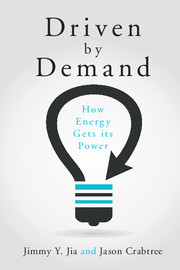Book contents
- Frontmatter
- Dedication
- contents
- List of figures
- List of tables
- Acknowledgments
- Part I Introduction
- Part II Three frameworks
- Part III Critical decisions
- 5 The International Niagara Commission of 1891
- 6 Trash as treasure
- 7 Paying for pavement
- 8 Heat without the hot air
- 9 The collision of two critical infrastructures
- Part IV Energy futurism
- Part V Societal advancement
- References
- Index
8 - Heat without the hot air
from Part III - Critical decisions
Published online by Cambridge University Press: 05 June 2015
- Frontmatter
- Dedication
- contents
- List of figures
- List of tables
- Acknowledgments
- Part I Introduction
- Part II Three frameworks
- Part III Critical decisions
- 5 The International Niagara Commission of 1891
- 6 Trash as treasure
- 7 Paying for pavement
- 8 Heat without the hot air
- 9 The collision of two critical infrastructures
- Part IV Energy futurism
- Part V Societal advancement
- References
- Index
Summary
Thermodynamics is a funny subject. The first time you go through it, you don't understand it at all. The second time you go through it, you think you understand it, except for one or two small points. The third time you go through it, you know you don't understand it, but by that time you are so used to it, it doesn't bother you anymore.
Arnold Sommerfeld, PhysicistAs a result of our familiarity with electricity and gasoline in our daily lives, many discussions about energy are really discussions about these specific commodities. However, there are many forms of energy that can satisfy common energy consumption needs. Heat is a historically important example of a useful form of energy. Thermal energy, in the form of hot water or steam, can be used to complement electric energy in ways that can improve efficiency, lower costs, and offer better services in certain situations.
In Copenhagen, heat is treated as a valuable resource along with electricity and petroleum. All factories are required to feed their excess heat into a central water loop that circulates heat through the entire city. The steam runs Sterling engines for mechanical motion, heats water for domestic use, cooks food, and sterilizes hospital equipment. Using heat provides desired end-use energy benefits at a much lower cost than using electricity alone. This chapter explores how heat and electricity can be used together to great effect.
Heat energy is probably the most elusive form of energy. We constantly experience thermal energy providing the experience of comfort in our buildings and vehicles. We tend to notice heat energy when it is absent or pervasive: when we are uncomfortably cold or hot. Other forms of energy used to produce light or motion are easier to see or experience visually.
Even though we cannot see it, a great deal of energy is required to manipulate heat energy.
- Type
- Chapter
- Information
- Driven by DemandHow Energy Gets its Power, pp. 149 - 165Publisher: Cambridge University PressPrint publication year: 2015

